SISTERS IN THE WORLD OF MEDIA EXPERIMENTING (WIDT)
ANTONINA NOWACKA, BOGUSIA NOWACKA
WIDT, 2019, photo: Marcelina Pieniążek
Being at the WIDT concert is an aesthetically deep experience, full of undefined impressions opening perception to a journey into the structures of matter and virtual worlds. This experience you would want to remember with your whole body and imagination. Ephemeral lava of light colours is projected onto the screen and slide down onto the costumes of the artists, and then crawl out of the stage into space. They pulsate with colours that are characteristic of an analogue medium palette and distortions from feedback. Visual forms overflow in perception and continually merge with the organic structures of the voice, the vibration of which permeates space. Some say this voice sounds like a synthesizer… and the visual forms are full of abstract emotions.
Bogumiła and Antonina Nowacka do not confine their expression to one medium of expression or to one project. Since childhood, they fall into the states of experimenting with performativity and exploration of the world while playing with form. They look for connections and relationships, analogue beauty in natural spaces of experience, but also in digital recording capabilities. They are interested in the virtuality of voice and image, their potential to open up imaginary worlds, retro futurism and glitch. Although each of them in different proportions, as befits sisters, do not agree on everything. However, they have a lot in common. For Sensor, they talk about childhood, ‘goofing around’, contact with nature, fiddling with electricity and analogue aesthetics, grassroots activities, VJ, economy in the art world and the formation of awareness of stage signs.
In the English version we present selected and most interesting quotes from the interview.
SHAPE OF VOICE AND PLAYING WITH FORM
AN: My medium is the voice and everything I do with my voice is related to the world of imagination, which means it is very imaginative…
BN: And spatial – this is how I perceive it. The voice is simply virtual. I am interested in the phenomenon of feedback, which requires cooperation of devices and connections between them. Recently on stage, I have been accompanied by the digital theremin, created in cooperation with Adam Błaszczyk, who took care of the programming side of this device. Because certain hand movements are combined with specific image parameters, I can influence the shape of the projection with hand movements in the air in a specific area. A form is created, which is a simulation of feedback from audio-video devices from the 1980s. We had to recreate the connections that were in the old equipment. The beauty of feedback in video devices comes from, among other things, shortcomings of these machines and from the fact that there was natural interference within the signal.
They became the beginning of the form; because the second device responds to such an artefact, the signal is multiplied. In this way, very diverse, aesthetically interesting, and quite distinctive images are created. Together with Adam, we built the Kuloncziboks device, which works on the same principle as those from the 1980s, only it is digital and simplified. Besides, it has more information, so new forms are created, completely crazy ones. Sometimes, when there is too much feedback, we have a white screen and nothing is happening, and in order for something to happen, you need to balance all signals from different devices. What matters is the ability to modulate these signals. When building this device, I also wanted the equipment not to take up much space. It is just that these old devices are very large and heavy. So now, I have a tiny instrument on stage with me that reads hand movements, a tiny pad and a computer. I take everything in my pocket and can go out into the world.
AN: Yes, I also really like the fact that the voice is an instrument that is basically ‘built’ into me and when I go somewhere to play a concert, I don’t have to worry about transporting the equipment.
Antonina Nowacka, source: artists’ private gallery, facebook.com/widtproject
WIDT, TR Warsaw, photos: Ernest Wińczyk – ernestwinczyk.com, source: facebook.com/widtproject
WIDT, TR Warsaw, photos: Ernest Wińczyk – ernestwinczyk.com, source: facebook.com/widtproject
WIDT, TR Warsaw, photos: Ernest Wińczyk – ernestwinczyk.com, source: facebook.com/widtproject
GLITCH ART – NEUROAESTHETIC THREADS, DISORIENTATION OF THE SENSES AND PENETRATION INTO THE STRUCTURES OF THE IMAGE
WIDT, source: facebook.com/widtproject
BN: My adventure with VJ-ing began much earlier than my interest in glitch. I became interested in this form when I used to go to electronic music parties. I felt the need to create an image. I wanted to visualize music, to show what visual worlds I perceive when I listen to these sounds. I started experimenting with the film and the available tools. I learned about the existence of programs for creating simple animations and their grouping or mixing. I learned the basics of image mixing, editing and use of camera, time reverse operations, etc. And I don’t know what it has to do with glitch. It is simply an interest in the electronic image and how it is created or transmitted.
BN: I used shifting back in time, changing the dynamics of the image and checking how it makes unreal and distorts the normal image.
AN: (…) I perceive using my voice as the creation of a story about imaginary worlds. I studied visual arts, created graphics and painted. This visual sphere has always been present in me. I used the collage technique because I was interested in creating worlds. I was cutting something out because, for example, the given structure of the newspapers suited me, they had the right colour and were a bit dated. The elements found correlated with the visions of the worlds I wanted to build.
AN: (…) I made an installation in which I created a synthetic soundtrack for collages. I recorded it on a digital synthesizer. Later, a computer game was created based on this installation. There you could walk in a virtual space filled with forms and sounds. I like to create spaces where you do not have to do anything. You can walk or lie down, just exist. You could feel good there or experience something beautiful while nothing is happening.
SCENIC METAMORPHOSES AND SPATIAL TRACES
BN: It developed over time and it started with visualization. Later, we had different performances in different places. And then we adjusted the equipment, lighting, image or visual construction to the shape of the stage or the place we found. And that’s when considering each surrounding separately started to sprout in my mind. Our awareness of the stage activities and the fact that we are a part of the space when we perform was developing. We wondered, for example, what the light looks like on us and…
AN: And we thought it would be nice if we were dressed in white, because then these visuals would be visible. It was also due to the feedback we got from the audience. We reflected on it and decided which way to go and what to develop. It just grew out of experience and willingness to explore the potential, to explore what else we can do. At some point, I was bored with this permanent form of a concert with visualizations. That is why we created the Mentos Gulgendo band, in which we play the organ together. I wanted to go a little different way, somewhere more holistic; creating a situation that is something between a concert and, for example, a performance or a spectacle, but that neither of these forms dominates the other, and all of it oscillates somewhere ‘in between’.
BN: We create a particular situation. I treat Mentos Gulgendo as an experiment on a musical pop band. I thought about making a ‘lighter’ form, but it turned out as it turned out. Regardless of how people perceive it, in this form the most important thing for us is that the situation, and not the concert with visualizations, is in the foreground
AN: (…) Contact is often associated with the audience and with something ‘direct’, such as addressing and looking at people during stage activities, as some musicians or performers do. And for me, this contact means something else. As it occurs, it is important to exchange the atmosphere or the flow of energy. I work with a voice that is a vibration and I pass something on through it, not with the fact that I look at the audience or that I address them in words. This is another type of communication, which somehow suits me better. I think it creates a mutual feeling. When I perform and when I sing, I always have this intention. It is my way of communicating and I do not know if it works but I hope it does.
Mentos Gulgendo, photos: Marcelina Pieniążek, facebook.com/marcelina.pieniazek
BN: I treat our publications as a ‘spatial trace’. So that is why there are different media, because our band is not strictly a musical line-up, but … intermedia, if I have to use an epitome. As for me, I am open to various forms of writing it down. I even thought about a book, but it melted away because there was a problem with the audio recording, although you could attach a sound postcard here…
AN: I am sceptical about the virtual reality space, because for me it is still an imperfect substitute for reality. The ‘real’ reality is something so unfathomable, so incomprehensible that entering simulation is a ‘next level’ activity for me. I have not yet grasped the reality in which I am functioning, let alone the virtual one.
AN: The deepest and most important experience for me is finding myself in a completely strange space, a new cultural situation. I discover places such as caves. I go in there and see that it is such a beautiful, completely cosmic world with huge bubbles of stalactites and stalagmites. The cosmos that is present in this reality, in this world … Knowing that it just appeared out of the matter of time, that it arose just from the water dripping for a million years, is a very psychedelic experience for me.
Otwarty Jazdów, source: facebook.com/widtproject
WIDT, Shiny Toys Festival, Mülheim an der Ruhr, Niemcy, fot. Yochanan Rauret, source: Facebook.com/widtproject
WIDT, source: facebook.com/widtproject
MATERIALISM LESSONS, DIY, AND EXPLORATION COURSES
BN: Grassroots initiatives are the field of exploration or creating a particular environment, of some network of connections, understanding and reflections with other people. You are confronted with what you experimentally do. You can explore your actions in some way, but also materialise your ideas and develop them. I think it is extremely important in the creative process.
WIDT, publishing house: Pointless Geometry, source: facebook.com/widtproject
Mentos Gulgendo, publishing house: endless happiness, Illustration: Masia Dębska – instagram.com/masiadebska
LISTEN TO SENSOR PODCAST
Broaden your perception. Hear about how technologies are changing art, culture, society, politics and marketing. The first series of interviews presents artists of the new media. You will find on Spotify part of the interview unpublished on the website.

See also...
Martyna Nawrot
Jagoda Wójtowicz
Eternal Engine and creating a collective virtual experience
We have entered a solarpunk that sees incredible potentials in technology. In using it to improve the conditions of the earth’s ecosystem.

Roch Forowicz

Konrad Zduniak


Ⓒ Copyright 2022 Sensor
Website proudly created by Karolina Jaworska
Used font: Roboto
Project by Weronika M. Lewandowska under an art scholarship of the Capital City of Warsaw
